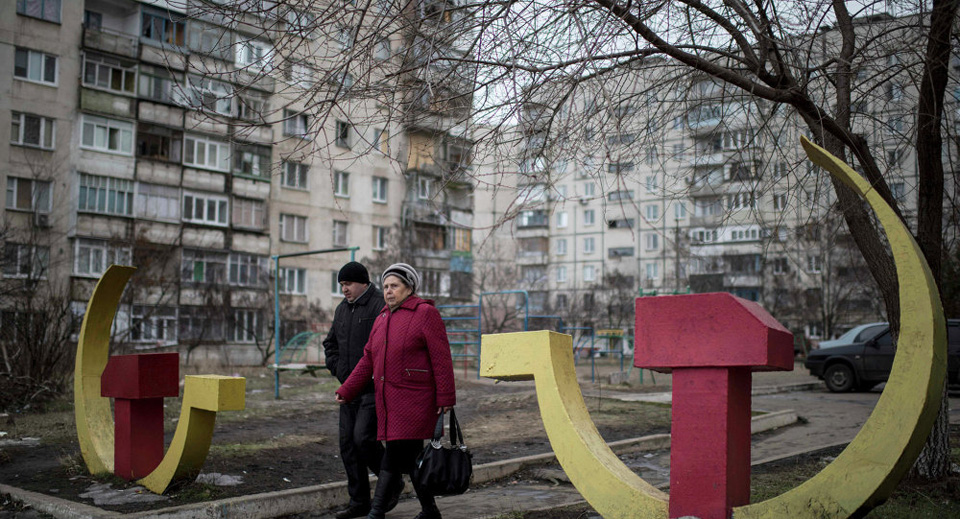
The Centennial of the Russian Revolution
November 7, 2017 marks the 100th anniversary of the Russian Revolution and the establishment of the world’s first socialist state. To commemorate the occasion, People’s World is presenting a series of articles that present wide-angled assessments of the revolution’s legacy, the Soviet Union and world communist movement which were born out of it, and the revolution’s relevance to radical politics today. Proposals for contributions are welcome and should be emailed to cjatkins@peoplesworld.org. Other articles in the series can be read here.
One hundred years. The world of 1917 was a very different place from the one we live in today. When we study the Russian Revolution, the most significant event of 1917, if not of the whole twentieth century, we must understand that it took place in a very different universe, that the constellation of forces, both within the country and outside of it, had a profound influence on the history of the Soviet Union that would follow.
To say simply that a socialist revolution in the United States would be a copy of that in Russia would distort the meaning of history and the process of social change. The changes in politics, economics, society, and technology over the last century stagger the mind. And change is not slowing down; the future, which at one point will see the establishment of socialism in the United States, will be in many ways different from today. Russia in the early twentieth century and the United States of the early twenty-first century and beyond are two very different places. We need to analyze the different economic, social, political, and cultural differences of the two countries in order to better understand the unfolding class struggle. Sure, there will be similarities, but the differences will be far more striking.
Russia at the beginning of the twentieth century was a semi-feudal society with only the most rudimentary capitalist development. But even then it was dominated by western imperialism. The serfs, the overwhelming majority of the Russian people, had been freed only in 1862. The czars, the landed nobility, and the Russian Orthodox church dominated all aspects of national life. Democracy as we understand it was non-existent.
These oppressive conditions led to the growth of a variety of radical groups. Among them were anarchists, nihilists, and socialists of various stripes. In time, the Russian Social Democratic Labor Party emerged as the most militant and class-conscious organization. Its Bolshevik faction, led by Vladimir Lenin led the workers and peasants to victory in the Great October Socialist Revolution.
Born in a time of world war, the young Soviet state faced numerous seemingly intractable problems. The country had to be rebuilt, people fed, and the foundations of a socialist state laid. At the same time, the capitalists, monarchists, and ultra-nationalists of Russia and their foreign assistants worked ceaselessly to destroy it. Winston Churchill, then a member of the British cabinet, declared that the Bolshevik republic must be “strangled in its cradle.”
Thus began a struggle that continued for most of the twentieth century. The imperialists were relentless in their crusade of destroying “communism.” First, it was intervention by counter-revolutionaries and foreign troops (including 15,000 from the United States). In the 1930s, it was the rise of fascism that led to World War II, a conflict that caused the death of more than twenty-five million Soviet people. From the 1940s until 1991, the United States led the other capitalist countries in the Cold War.
Despite living under these threats, the Soviet Union emerged as the first socialist society in history. Through a series of five-year plans, it rose to be the second largest economy on Earth. Unemployment was eliminated, literacy approached one-hundred percent, free education from nursery school to graduate school, as well as free medical care was guaranteed. A nation of more than one-hundred nationalities lived for the most part in peace.
The USSR, however, is no more. The reasons for its disappearance are complex and go beyond the scope of this essay. Needless to say, it is important that the subject be studied in even greater depth in the years ahead.
Therefore, how does the Soviet experiment relate to the struggle for socialism in the United States? To what degree will the two experiences be similar and to what degree different?
Those who say that “communism” is the same everywhere are taking a one-dimensional approach to the science of social development. History, social and economic relations, and culture are among the factors that will mold a unique path for our country.
In the United States, the building of socialism will be influenced by our history—one of struggle to strengthen and deepen democracy; overcome racism, sexism, homophobia, and xenophobia. Our people take very seriously the rights enunciated in the Declaration of Independence and guaranteed in the Bill of Rights.
In a socialist USA, these rights will be made even stronger, while new rights, based on a humane and cooperative economic model (such as the right to a job and the outlawing of racism) will be added. The Communist Party USA places the idea of a “Bill of Rights Socialism” at the core of its program.
The United States has the strongest economy in the world. The material basis for socialism already exists; it will not have to be built almost from scratch as the Soviets did. Our people are highly educated and understand how the world works.
At the same time, our country has the world’s most powerful military, one that has over the last three-quarters of a century dominated much of the world. We will have no fear of being attacked and subjugated by another. One of the basic demands of the people’s movement, as a result, has been the dismantling of the military-industrial complex which exercises a disproportionate influence in our society.
The people of the United States have a rich history of struggle against tyranny and oppression. From the days of the Abolitionists before the Civil War, through the struggles for women’s rights, peace, civil rights, and much more, many Americans have worked to create a better, more equal society. Attempts to limit our rights—for example be it from demagogues such as Joseph McCarthy, the Watergate affair of Richard Nixon, or the policies of Donald Trump—have been and continue to meet with large-scale resistance.
Socialism in the United States will be a society of free individuals who will have the opportunity to master the wonders of science and technology, use their creativity to express what lies deep in their souls, and to live in peace and equality. It was a dream that the Soviet Union aspired to but was unable to meet. The future will be different.










